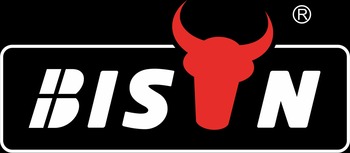When cleaning tough clogs or dirty surfaces, you may come across the terms “sewer jetter” and “pressure washer.” Although both are practical cleaning tools, they are different. More often than not, people use the two terms interchangeably while they are different. Pressure Washers, designed to clean various surfaces using pressure water pistols, are ideal for removing dirt, grime, and other residues. On the other hand, sewer jetters are specialized devices used to clear blockages and maintain sewer lines by blasting pressure water into the pipes.
This article aims to clarify the differences between a pressure washer and a sewer jetter. BISON will guide you through choosing the right tool for your specific needs and clear up any confusion between these powerful machines.

Pressure washers
A pressure washer is a cleaning device that cleans and removes filth debris, mold, grime, paint, and other substances from surfaces using water under pressure. They are available in electric or gas-powered models and come in different power levels, from light to heavy duty. It’s commonly used for cleaning buildings, vehicles, outdoor furniture, and driveways. By delivering water at various pressures, pressure washers make it easy to clean surfaces quickly and efficiently whereas conventional methods would be labor-intensive and time-consuming.
How does a pressure washer work?
A pressure washer doesn’t pressurize your pipes but uses pressure water to go through your pipes and break up buildup.
A pressure cleaner consists of several key components: a water inlet, an electric or gas motor, a water pump, a pressure hose, and a trigger gun. Here’s a quick rundown of its main working principles:
- Water source: Connected to a garden hose or direct water supply.
- Pump: The water is accelerated by a motorized pump.
- Nozzle: Pressurised water is expelled through a nozzle which is adjustable for different spray intensities – from a focused jetter for tough dirt to a wider spray for gentle cleaning.
Sewer jetters
Sewer jetters, also known as jetter machines, are specialized tools designed for cleaning sewer lines and drain pipes. Reliable hydrojetters from reliable manufacturers (such as BISON) will be designed with ease of use, safe operations, and efficient clearing. These features make sewer jetters the top choice for many plumbers, drain-cleaning professionals, and other industries.
How does a sewer jetter work?
They use a pressure water jetter to dislodge and clear blockages such as grease, tree roots, and other debris that can cause clogs in pipes. The jetting nozzle is typically inserted into the pipe, where the water is shot forward to dislodge blockages and back to propel the nozzle further into the pipe.
Sewer jetters are comprised of several key components that work together to deliver pressure water to clean pipes:
- Hose insertion: A long, flexible hose is inserted into the sewer or drain pipe.
- Nozzle: The nozzle has several jetters – some pointing forward to clear the blockage and others pointing back to push the hose through the pipe.
- Pressure water: With a long hose and nozzle, drain jetters can force three pressure jetters of water through your pipes. The pressure jetters cut through blockages and push out debris. As the nozzle advances, the inner walls of the pipe are cleaned.
Pressure washer vs. Sewer jetter: Understanding the key differences
While pressure washers and sewer jetters both utilize pressure water to clean, their design, functionality, and applications differ significantly. It’s important to understand these differences to choose the right tool for your needs. So, let’s discuss the difference between a jetter and a pressure washer in more detail.
Water pressure and flow rate
Typical models of pressure washers typically range from 1,000 to 4,000 PSI (pounds per square inch). High-end models can go as high as 5,000 PSI, while sewer jetters typically run at 1,500 to 4,000 PSI, with higher ceilings for industrial-grade models.
Sewer jetters typically have flow rates ranging from 2.0 to 12.0 GPM. The usual pressure washer has a flow rate of 2.5 to 4 gpm. Jetters start at the four GPM mark and go up from 8 to 9 GPM for portable models and 18 to 25 GPM for trailer-mounted equipment.
Nozzle design and function
The nozzle is one of the most obvious differences between a pressure washer and a sewer jetter.
Pressure cleaners can freely interchange nozzles to change spray patterns and intensity. Different nozzles offer versatility for a variety of tasks. Common types include 0-degree (pinpoint), 15-degree, 25-degree, 40-degree, and soap nozzles.
Sewer jetter nozzles are specially designed with rear-facing jetters to propel the hose forward through pipes, and sometimes forward-facing jetters to help break through obstructions. Tailored specifically for pipe cleaning and blockage removal, they are less versatile for other cleaning tasks.

Hose length and flexibility
Pressure washers typically come with a 20 to 50-foot hose. You can purchase a longer hose separately, but it may affect the water pressure. Because they are not designed to traverse complex plumbing systems, pressure washers are less flexible.
Sewer jetters are available in hose lengths of 50 to 500 feet to reach deep into the sewer system. It is extremely flexible, traversing bends and navigating through the complex layout of various plumbing systems. If you don’t know the psi of the machine and the approximate length of the pipe you are cleaning, a 100-foot sewer jetting hose is a good option.
Portability and maneuverability
Pressure washers come in a variety of styles, some models are lightweight and handheld, while others are larger and have wheels for mobility.
Sewer jetters, on the other hand, while not as available in handheld models as pressure washers vary greatly from one type to the next, with small portable units available for residential use and large trailer or truck-mounted units for commercial use.
Power sources
Pressure washers are available in electric and gas models. The electric models are generally lower noise and lighter in weight, suitable for lighter tasks, and are simple to operate with plug and play. Gas models are suitable for heavy-duty tasks outdoors where electricity is not available, they have more power and noise and require regular maintenance.
Sewer jetters are available in electric, petrol, and diesel models. Of these, the electric models are used in smaller residential applications or indoors. The petrol and diesel models provide more power and maneuverability and are more common in professional settings and municipal government applications.
Decision matrix for choosing between a pressure washer and sewer jetter
Criteria | Pressure washer | Sewer jetter |
Type of blockage | Surface dirt, grime, mold, mildew | Deep sewer blockages, internal pipe blockages |
Location of blockage | Driveways, decks, siding, vehicles | Pipes, drains, sewer systems |
Frequency of use | Suitable for both one-time cleanings and regular maintenance | More cost-effective for regular or professional use due to higher investment |
Cost (rental vs. purchase) | Moderate cost to purchase. Rental is affordable and widely available | High cost to purchase. Rental can be very high and may require specialized transport and training |
Conclusion
In summary, selecting between a pressure washer and a sewer jetter hinges on understanding the main differences: Sewer jetters are designed for pipe cleaning, while pressure washers are designed for surface cleaning. Using the right tool is crucial not only to ensure effective cleaning but also to prevent potential damage. For both professionals and homeowners, it’s important to follow best practices: always read and adhere to the manufacturer’s guidelines, wear proper protective gear, and don’t attempt to clean areas for which the equipment is not intended. In terms of versatility and ease of use, pressure washers are more suitable for a variety of home or property cleaning needs, while drain jetters are typically used for professional cleaning. If you need a pressure washer or drain jetter, contact BISON today. As a well-known pressure washer manufacturer in China, BISON provides you with a wide variety of cleaning machines and a variety of accessories to ensure that you have the right tool for every job.pressure washer vs. sewer jetter - FAQ
Yes, you can convert your pressure washer with an easy-to-find conversion kit. Make sure the PSI (pounds per square inch) on your pressure washer is at least 1,500 and no more than 4,400.
- Types of pressure washers
- Electric pressure washers(BISON ES3-4B recommended)
- Hot water pressure washers(BISON HPW186F recommended)
- Cold water pressure washers(bison BG04-24V recommended)
- Types of sewer jetters
- Portable sewer jetters(BISON BS-EST150 recommended)
- Truck-mounted sewer jetters
- Trailer-mounted sewer jetters
The sewer jetter hose can be used with any pressure washer to clear many indoor and outdoor drains. It quickly unblocks and maintains flow.





